Free trials are more than just a checkbox in your product's offerings; think of them as a strategic powerhouse. They let users dive headfirst into your software's world, experiencing its real-world impact.
By constantly refining and upgrading your free trial using various methods, you're on a path to driving even more conversions and nurturing your business's growth.
Surveys are the secret ingredient that can transform your free trial from good to great, helping you better understand your users' needs and expectations.
TL;DR
- Surveys are one of the most powerful ways to increase your free trial conversion rates. They can be used at any point during the user journey to collect valuable feedback and improve user experience.
- Tool walkthroughs, checklists, and visuals can also be immensely helpful. Using session recordings and data analysis will allow you to fine-tune your offer.
- Your free trial is a strategic asset. It can show your customers how your product will help them achieve their goals, lower the entry barrier, and allow them to interact with it in a real-world context.
- There is no single satisfactory conversion rate for free trials. The figure depends on many factors, including the type of free trial you offer, your target market, and pricing structure.
How to increase free trial conversion rates using surveys
The methods mentioned above can significantly improve the free trial experience, but there is one more great way you should try.
By actively seeking and acting upon the user feedback you receive via surveys, you can create a more user-centric trial experience, identify and remove obstacles, and align your product and pricing strategies with user expectations, ultimately driving more successful conversions.
Below you’ll find a few survey templates that you can use right away to improve your free trial conversion rate.
.png)
How likely are you to purchase the subscription once the free trial ends?
Users who hesitate to sign up after a free trial often have specific reservations or obstacles in their path. This survey helps identify those barriers, providing valuable information on what you need to address to encourage conversion.
Moreover, the insights from this survey can be used to refine your marketing efforts. You can target potential customers with messaging that directly addresses their stated needs and concerns, making your marketing more effective.
For best results, trigger this website survey sometime after the user has started their free trial so that they’ve had a chance to get familiar with your product. As a follow-up question, you can ask what they liked the most about the product and what improvements can be introduced to persuade them to convert.
How satisfied are you with your free trial?
This survey places users at the center of your product's development process. By directly asking for their satisfaction level, you demonstrate a commitment to providing a positive and tailored experience.
How can we improve your free trial experience?
Users who are dissatisfied with their free trial often encounter specific pain points or challenges. This survey helps pinpoint those issues, providing you with actionable insights on where to focus your improvement efforts. You can use advanced survey logic to show different follow-up questions for satisfied and unsatisfied respondents to personalize their experience.

How easy is it to get started with the free trial?
You can employ a Customer Effort Score web survey to see how easy it is to start using your product. The survey will help you assess the ease and efficiency of users' interactions with your product during the free trial in real time. By measuring the efforts users put in when engaging with your product, you gain insights into their experience and whether it aligns with what you had in mind when building the product. This immediate feedback is invaluable for making on-the-fly adjustments to improve the trial experience.
What problems did you experience?
You can make the most out of the survey by asking unhappy users about the problems they encountered during the free trial to reveal pain points and bottlenecks in the trial process. Understanding where users encounter friction allows you to proactively address these issues, improving the overall user experience and reducing barriers to conversion.
How difficult is it to use this feature?
Keep an eye on how much time and effort your trial users are putting into different parts of the trial. Ask them how easy it was to explore a specific feature or about their interactions with your customer support. Make sure to target such surveys after the desired action (a Java Script event) has taken place with the help of Survicate advanced targeting. The feedback you’ll receive will help you perform targeted improvements in the free trial experience and increase your conversions.
What made you decide to upgrade?
You can ask the free trial users who converted what helped them make the decision with the What made you decide to upgrade? web survey.
This survey allows you to gain an understanding of the specific influences and factors that motivated free trial users to upgrade. By leveraging these insights, you can position your product or service as the ideal solution that addresses users' specific needs and pain points.
Moreover, the survey responses can serve as valuable success stories and testimonials. Sharing the experiences of satisfied customers who upgraded can build trust and credibility among potential users, influencing their decision to convert.
What is stopping you from upgrading?
You can send a “What is stopping you from upgrading?” email survey to those free trial users who didn’t upgrade after the free trial ended.
This survey helps you pinpoint the specific obstacles and concerns that deter free trial users from upgrading. By collecting this information, you can identify and address the barriers that are hindering conversion. When users express their concerns through this survey, it provides an opportunity to address their reservations proactively.
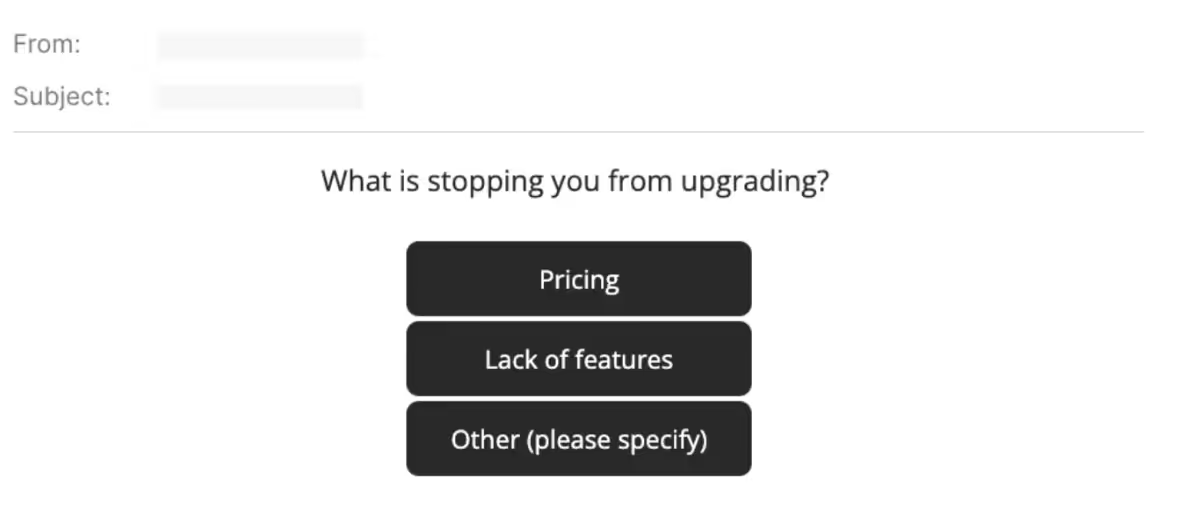
You can choose to put the first question in a single answer selection to embed the first question right into your email body. This will help you achieve a better response rate and collect more insightful feedback. You can even offer incentives to your respondents in the form of, for instance, more time on trial in exchange for their feedback which will also have a positive impact on your response rate.
Adding different follow-up questions to learn more details is also possible with a survey logic feature.


Strategies to increase free trial conversion rates
Beyond surveys, there are other strategies you can employ to influence your free trial conversion rates to see them grow. Below you’ll find five of the most popular ones.
Tool walkthrough
Make the learning curve smoother and get users to value faster with interactive walkthroughs. Skip the old-school product tours that bombard users with all the features at once, and go for bite-sized, engaging feature walkthroughs instead.
This way, you'll be providing user-friendly guidance that cuts through confusion and makes it easy for users to start benefiting from your tool right away.
Analytics tools
Dive into the customer journey using tools like Amplitude Analytics or Google Analytics. Understand how customers use and adopt your product, and take cues from your most successful users.
As a result, you're not just analyzing data; you're getting to know the real people who love your product. Moreover, you’ll have a chance to uncover friction in your trial experience and find the gaps for optimization.
Session recordings
Watch screen recordings and session replays to learn where users are getting stuck. Observing session recordings on a regular basis can help you uncover many areas for improvement and make the trial process smoother.
This is what Andrew Capland, a former Director of Growth at Wistia, did with his team by introducing so-called Fullstory Fridays. They gathered as a team every week to watch Fullstory session recordings of real people navigating through their product for the very first time. That routine turned out to be a real game-changer for the team.
Checklists
Implementing checklists within the free trial experience can be a powerful strategy to encourage users to complete the onboarding process effectively. Checklists are intuitive tools that guide users through the onboarding journey, breaking down complex processes into manageable steps.
As trial users check off items on the list, they experience a sense of progress and accomplishment and learn what you need them to learn about your product.
There is a psychological phenomenon known as endowed progress that lies behind this. Essentially, this concept suggests that the more individuals believe they are nearing the completion of a task, the more motivated they become to see it through to the finish. And you can use it to your advantage for increasing conversion rates.
Once trial users finish a checklist, you can enhance their experience by incorporating another powerful psychological strategy: offering incentives. Take MailChimp, for instance—they celebrate their customers’ campaign launch with a virtual high-five.

Why do they do this? Because it's a way of raising dopamine, making them feel happy for achieving an important accomplishment, and, ultimately, building long-term habits around the product.
Visuals
Visuals can provide clarity to users about how your product works and what it can do for them. Not only do videos and images can illustrate key features, functionalities, and use cases more effectively than lengthy written descriptions, but they also keep users engaged during the trial and reduce the likelihood of them dropping off prematurely.
People tend to remember visual information better than text which facilitates learning and retention. For example, Prodpad recorded some simple videos about their product’s key functions, chunked them into small 30-60-second segments, and made them pop up all over the product once a user showed an interest in some feature.
In essence, those videos looked like 1-1 product demos that a trial user could watch if they wanted to. An analysis showed that those who watched videos were more likely to buy a subscription than those who didn’t. So, videos helped Prodpad convert otherwise lost or confused users into much more confident happy customers, increasing the free trial conversion rate.
Why the free trial experience is important
First of all, a free trial is more than just a feature; it's a strategic asset. It offers potential customers a genuine opportunity to engage with your software in a real-world context. This experience allows them to assess its performance and suitability for their specific needs.
Also, during a free trial, users gain access to your software's interface, features, and functionalities. This hands-on exploration is crucial for them to figure out if the software is user-friendly and intuitive. It's their chance to interact with your product and see how it fits into their daily workflow.
Moreover, free trials lower the entry barrier for potential customers. By reducing the risks your customers might associate with trying new software, you make it more likely they will actually purchase your product after they’ve tried it.
How can a free trial lead to more conversions?
The idea is simple: the better the free trial experience, the bigger the chances are your prospect will want to convert to a paid customer. And here is the trick: show your trial users the value your product offers and clearly show how your product will help them achieve their goals. Without that, most users won’t pay for your product, no matter how beneficial you think it can be for them.
The best way to find out what your customers want to use your product for is to ask them directly, for instance, by using a simple survey:
Think well about making the onboarding experience as efficient as possible. If your product is difficult to use or navigate, your trial users may get frustrated and not take the time to fully explore what you have to offer.
But if your product is intuitive and easy to use, your free trial user will not even notice how a habit around the features that are most core to their use case will be developed.
Once they feel empowered to make the most of your product, it is natural for them to continue using your product once the free trial ends and the time to pay comes.
A part of a good free trial experience is exceptional customer support which can make a significant difference in conversions as well. Assisting users, answering questions, and resolving issues promptly builds trust with potential customers, making them more comfortable with the idea of becoming paying customers.
Again, you might find surveys helpful in measuring customers’ satisfaction with your customer support:
And remember, it's vital to continually improve your free trial experience based on the feedback you get from your trial users. This way, you can fine-tune your product to better match their needs, which will, in turn, lead to even higher conversion rates over time.
What is a good conversion rate for free trials?
Generally speaking, it’s not easy to say what a “good” free trial conversion rate is. It depends on many different factors such as the nature of the product, trial duration, target market, pricing structure, and overall value proposition.
Benchmarking paid conversion rates is also tricky because there’s a huge gap between average numbers and the numbers that the best-in-class brands reach.
Leading companies can easily see free trial conversion rates surpass 25%. For example, back in 2014, Slack’s free-to-paid conversion rate was 30% which is considered one of the highest in the enterprise business.
On the other hand, for many companies, a free trial conversion rate of 10% may remain an elusive goal.
Types of free trials
To understand why these conversion rates differ so much, let’s explore the main types of free trials.
Freemium
It is a business model where companies provide users with a free, basic version of their product, enticing them to upgrade to a paid premium version with added, advanced features. This type was chosen by many well-known companies across the globe, such as Slack, Calendly, Grammarly and Notion.
Opt-in Free Trial
The opt-in free trial has been successfully adopted by companies such as Customer.io and Salesforce. In this trial type, users are granted full access to the product or service for a limited time without the requirement of sharing any payment information upfront. Companies using this model typically aim to remove barriers to entry and make it as simple as possible for prospects to start using their product.
Opt-out Free Trial
In this model, users have to share their payment information right from the start to enjoy full access to the product or service during the trial period. This approach, employed by Amazon Prime, requires careful handling because it might feel like a sales push, especially with shorter trial periods that don't allow users enough time to thoroughly test the product. When done well, companies can achieve impressively high conversion rates. But when mishandled, it can leave customers with regrets, leading to more cancellations and negative reviews.
Hybrid
The hybrid type combines elements of both Freemium and opt-in/opt-out approaches. Initially, users enjoy unlimited access to the product or service for a specific period of time. After the trial period ends, they are granted access to the Freemium version indefinitely. However, to regain access to all premium features and functionalities, they have to upgrade to a paid account. Companies like HubSpot and Adobe have effectively implemented this strategy.
Freemium trials convert to paid at the lowest rates because a significant percentage of users will find that the free features are sufficient for their purposes, according to the First Page Sage report. An industry benchmark for freemium shows an average of 2,6% organic free trial to conversion rate.
With an opt-in trial, the industry benchmark increases to 18.20% organic free trial conversions on average.
As opt-out free trials require the user to submit payment information, their decision to pay the subscription fee is often passive. It significantly increases the average number for organic conversion rate to 48,8%, as per the report.
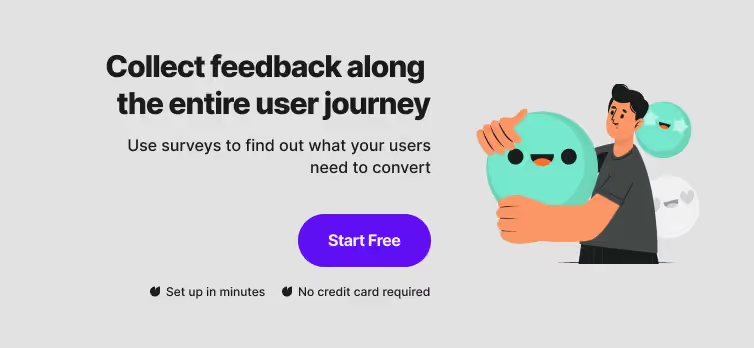
Improve your free trial conversion rates with Survicate
Surveys can help you improve your free trial by using your users’ feedback. Instead of relying on guesswork as to why your conversion rates are low, simply ask! And use the feedback you gathered to make the necessary changes that will help you boost your conversion rates.
Remember to experiment with different surveys and questions until you find a perfect solution that brings the most valuable feedback.
Survicate will help you collect the feedback and turn it into the growth of your business.
Ready to optimize your free trial experience? Set up your free Survicate account today and witness the transformation of your free trial into the path to a loyal customer base!








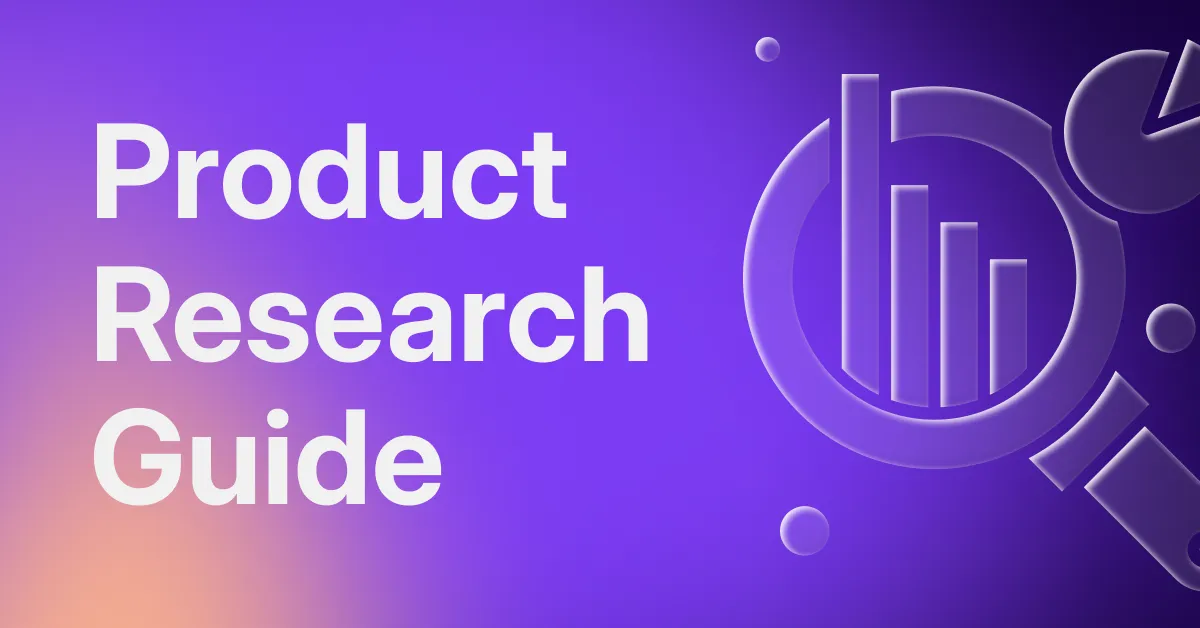
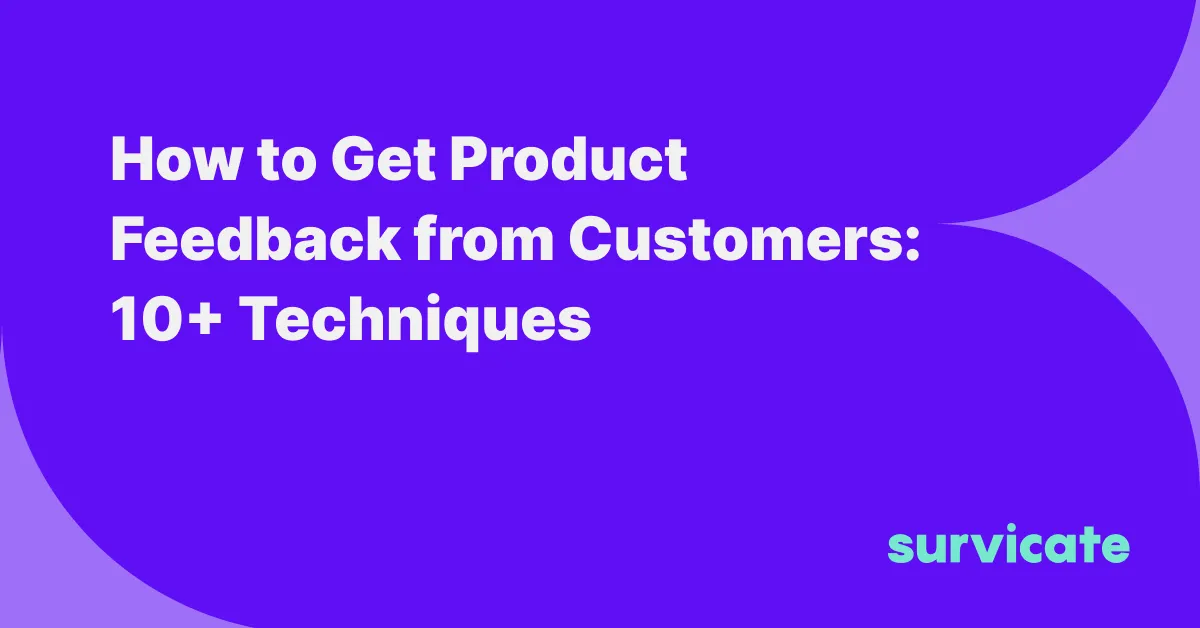
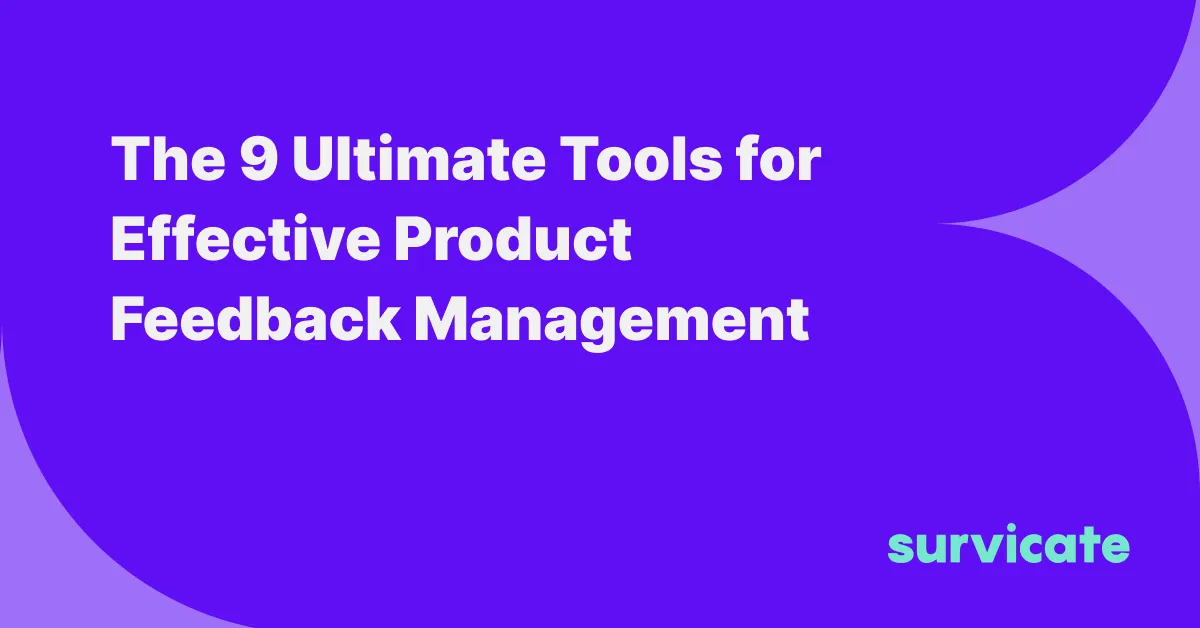
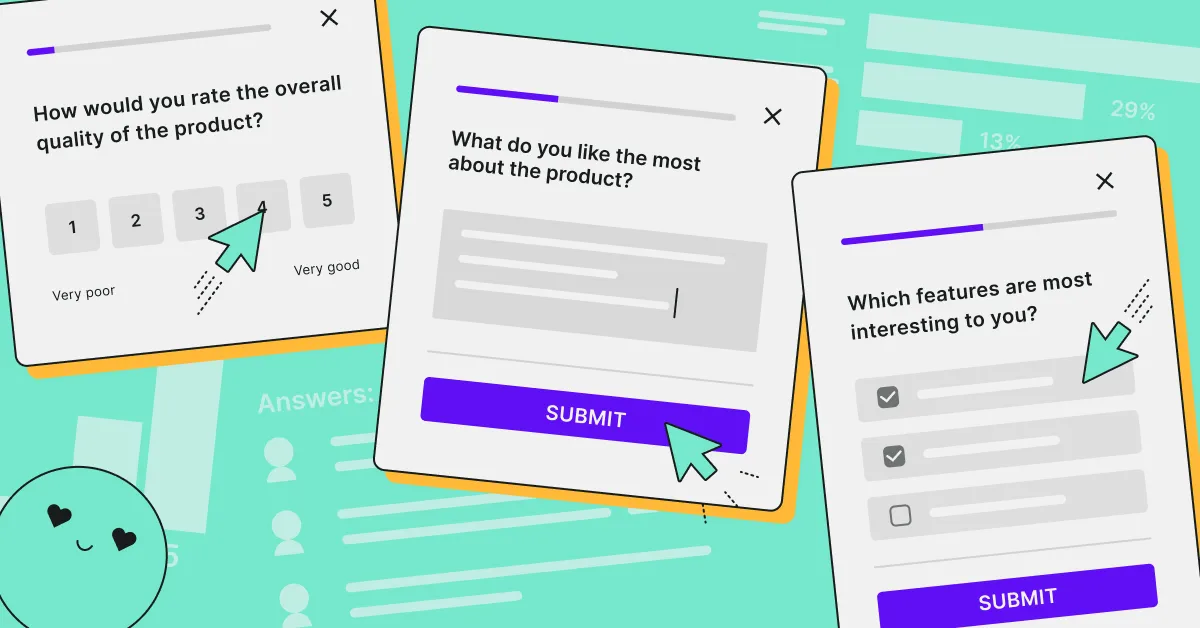
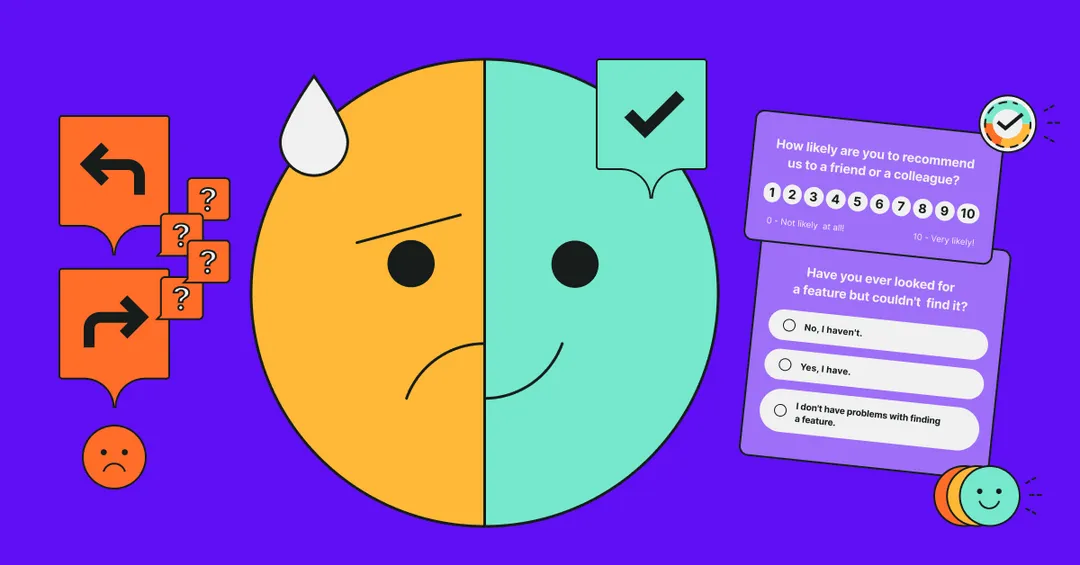
.webp)
.webp)


